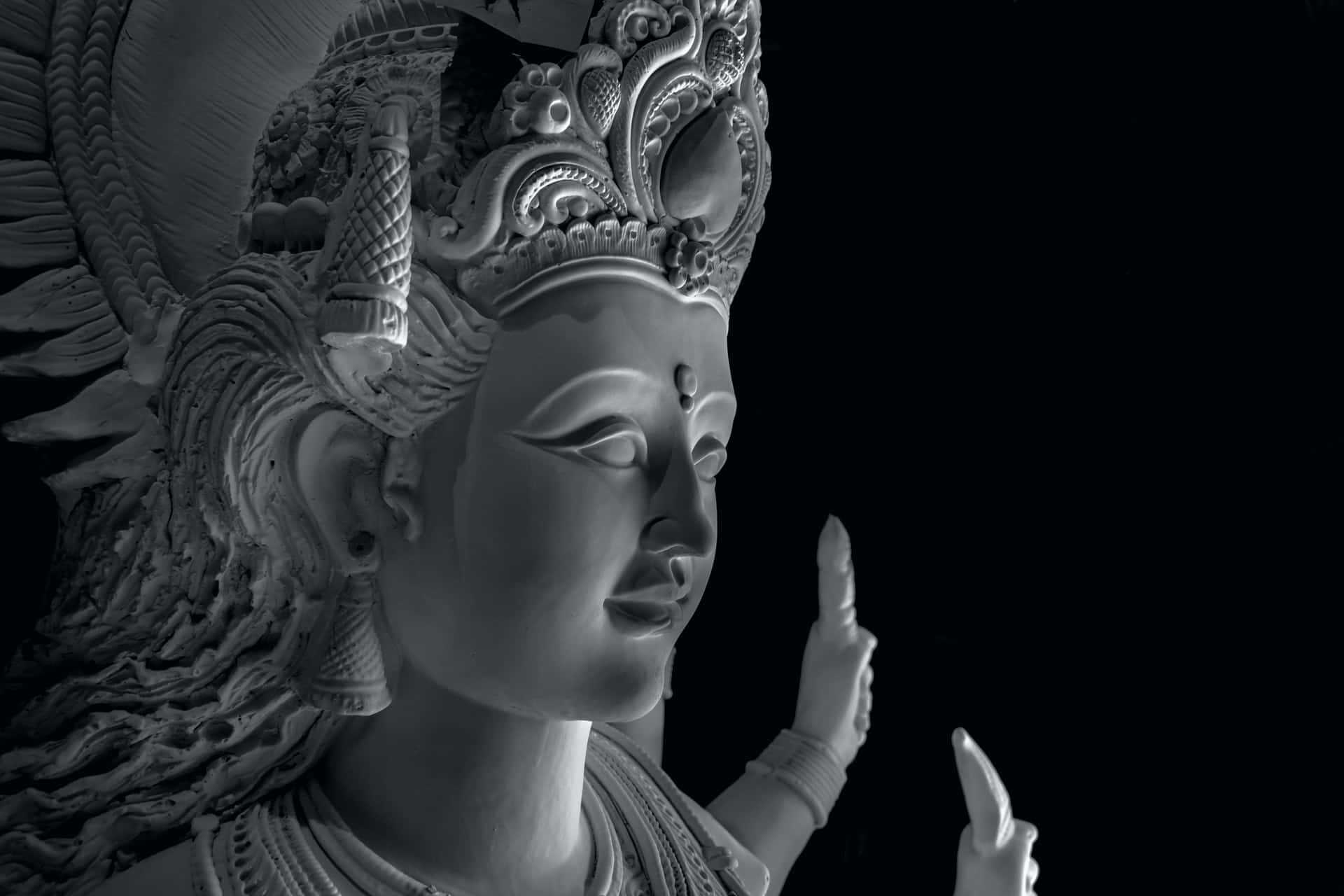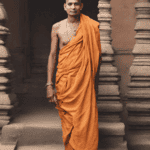Gods and goddesses in Hinduism have their meaning and significance for worship. Each of them is worshiped according to their specific reasons. Likewise, the goddess Kali has her reason to be portrayed in a way.
The common question of why is goddess Kali Black in colour has some reasons for it. Firstly, the meaning of the word Kali in Sanskrit is the one who is black. And in Hinduism, the goddess of time and death or the black goddess. It’s the feminine form of Kala which means the time of death and black. Goddess Kali’s roots can be drawn to the gods of the village, tribal, and the mountain culture of Southern Asia who was slowly assumed and transformed, if not fairly controlled, by the Sanskritic traditions. Her first appearance is noted in the Sanskrit cultures ‘Devi Mahatmya’ or the glorification of the goddess. Kali’s is commonly not just associated with death but also with violence, sexuality and, unexpectedly, in later traditions with maternal love.
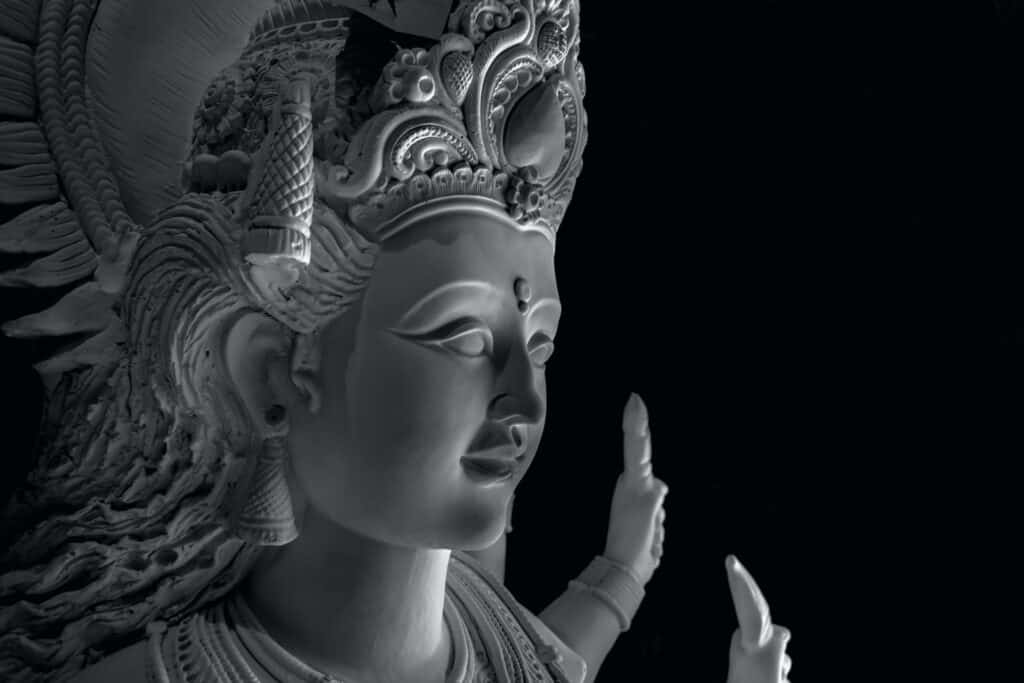
She is depicted in many forms in South Asia and now also in many parts of the world, Goddess Kali is most commonly considered as blue or black and partly or completely bare, with a long rolling tongue, many arms, a skirt or girdle of arms, a neckpiece of beheaded heads, and a beheaded head in one of her hands. She is usually shown standing or dancing on her spouse, Lord Shiva, who lies flat under her.
In many portrayals, she is seen rolling her tongue out of her mouth, and it is sometimes believed to show her surprise and humiliation at noticing that she is crushing on her husband. However, the relation of Kali and her tongue has some ancient beliefs. An ancestor of Goddess Kali is the giant Long Tongue, who conquers up offerings in the history of Sanskrit texts known as the Brahmanas.
The ‘Devi Mahatmya’ says of how Goddess Kali sprung up from the wrath of the Goddess Durga to kill the demon Raktabija. At the time of the fight a new demon arises from every drop of Raktabija’s blood as it hit the ground and to stop this, Goddess Kali would prevent the blood from reaching the ground. It is also considered that she was born at the time when Goddess Parvati shed off her dark skin and the cover became Kali who is also known as Kaushika, that is ‘The Sheath’ leaving Parvati in the form of Goddess Gauri or the fair one.
She is worshipped in all over India but particularly Kashmir, Kerala, Bengal, and Assam. Feminist scholars and authors in the United States have also looked upon Kali as a sign of women empowerment, though associates of New Age activities have found religious and sexual delivering motivation in her violent sexual appearances.
Motherly love
Ma Kali is the Kala shakti or the controller of time. She shows the temporariness of all things, and that is why she wears a necklace of skulls. However, she is also the final power of time, which takes us from death to eternity. With being an endless time, Kali is endless space, the immeasurable void, which is showed by her dark colour. Her charming dance of change is all survival.
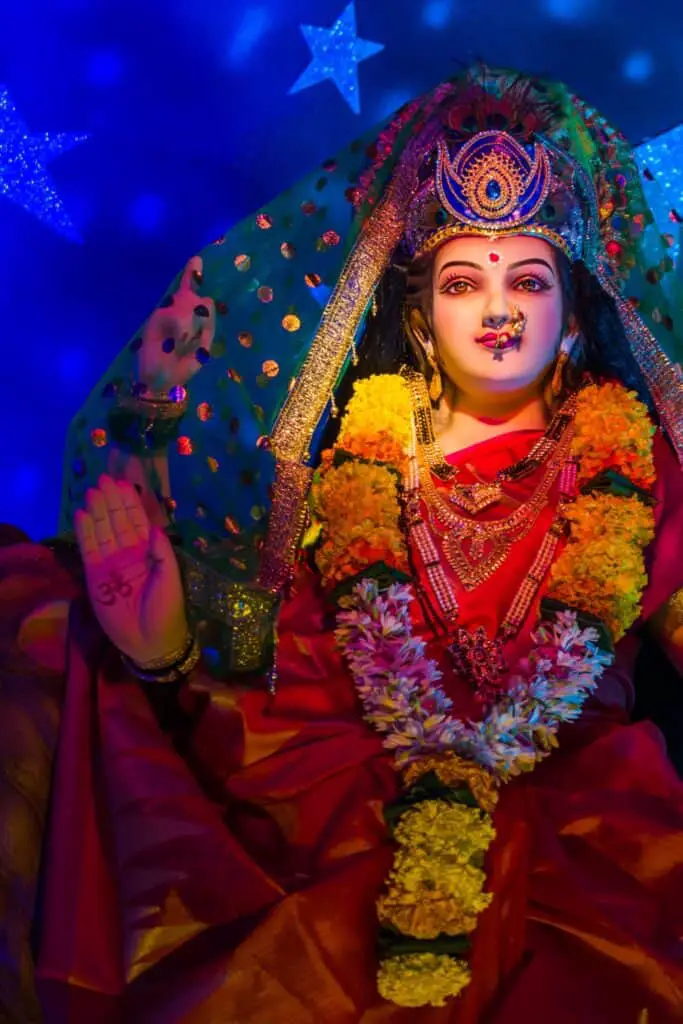
Goddess Kali holds the Vidyut shakti which is the lightning or electric force of awareness that is the highest power. Every goddess and the whole universe forms from her strongminded power. The seed mantra of Kali is kreem, which is known as the kriya shakti or power of change behind the huge measure of life.
She is not a goddess of death and destruction and people see her be, but on the other hand, she signifies the whole triumph of the Heavenly overall death and ruin. Her soldier goddess form eliminates all the illusions of the mind and shows the unending company of our innermost self that is in unity with all.
The Yoga Shakti
Goddess Kali is the internal strength of yoga or yoga shakti. Practising Yoga in the actual sense is the unity and return to the heavenly source of life. The idea of yoga rests on nirodha, which is the full attention of the mind and closure of the ego. Goddess Kali is this nirodha shakti and the power of denial, neither this nor that, of the Upanishads.
The secret of yoga Kundalini shakti, which is the power of transformation that happens within us, works via Kali’s grace and inspiration. Kundalini rises and softens all the chakras or energy centres that are within us and brings it back into the state of pure unity mindfulness which is Ma Kali’s eventual residence.
The Kali is Shakti innate in Shiva as Mahakala who the great lord of infinity.
Her appearance and background
Goddess Kali is a fearsome goddess to see. Her skin is black, she has bright red eyes which are set deep in her head, and her distinguishing tongue lolling salaciously from her mouth. She also wears a necklace of skulls and a skirt of human arms. Her arms hold a beheaded head and a vessel in which blood running out of the head is contained. She also has a sword and a trident.
In the most shared appearance of Kali, the goddess is seen with four arms and stands on top of her husband Lord Shiva. She also has a ten-armed portray, where she is bright blue in colour and is mostly not standing on her husband. In most Hindu illustrations, there is no single, common, recognised picture of Kali; she is portrayed in several ways throughout Hindu cultures.
One might never discover how long Goddess Kali has been worshipped by the Hindus in Southern Asia, but she likely preludes any of her appearances in the written texts or scriptures.
Kali as Devi Mahatmya
The religion of Hinduism is full of tales about the gods and goddesses, and most of them have existed by word of mouth than being written in texts. The very popular story of Goddess Kali originates from the Devi Mahatmya which was written in between 400 and 600 CE. The Devi Mahatmya portrays a violent fight between the several manifestations of Durga and a group of demons.
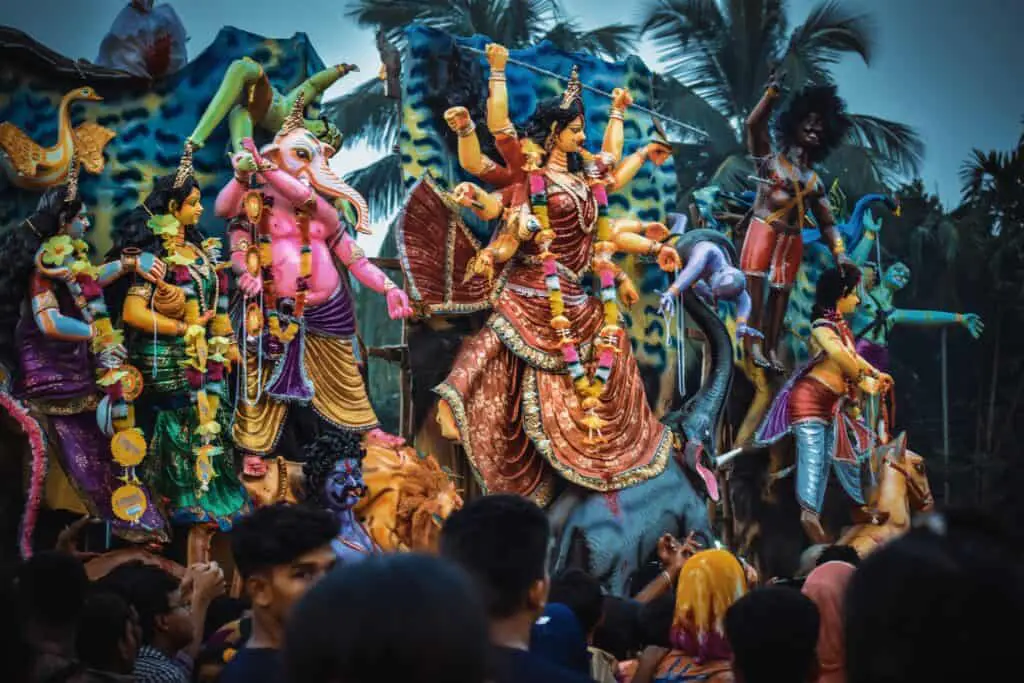
The calm, womanly, lovable side of the goddess, in the form of Parvati, arrives on the battlefield and issues the loving side of the goddess through her body, in the form of the Goddess Ambika. After doing so Parvati’s skin turns to black and she changes into the feared Goddess Kali.
No character in the figure of religions in the entire world is more multifaceted than the Hindu Goddess Kali. Overall, Kali seems to be an immensely terrifying manifestation of the holy, with her relations with blood sacrifices, death, and ruin. Yet, Kali is also seen as the highest mother figure, guardian, and deliverer. We can’t know Goddess Kali without accepting both of her extreme sides and indeed, such uncertainty and diversity are found in much of Hinduism.
Goddess Kali is a historic appearance of a mother’s violent, guarding love for her children and the feminist power arising to attack those who trouble her children. Kali is the dark character of the goddess Durga, who is dominant to Hindu devotion.
